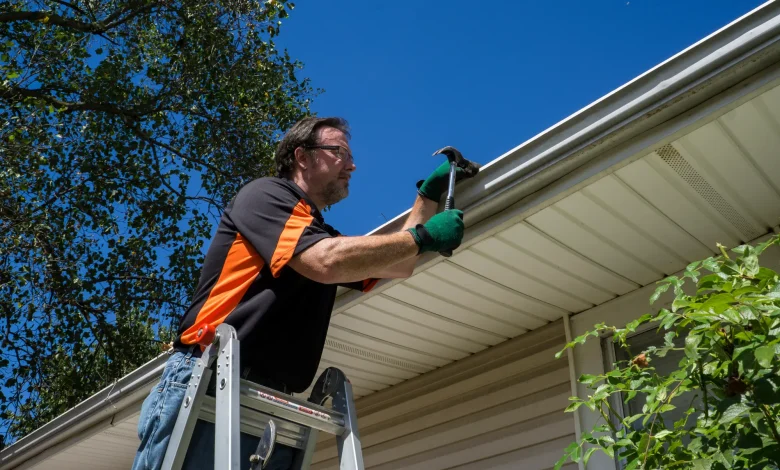Mastering the Art of Gutter Repair: Essential Tips for a Leak-Free Home

Introduction:
Gutters play a crucial role in safeguarding our homes from water damage by channeling rainwater away from the roof and foundation. However, over time, gutters can become worn, damaged, or clogged, leading to leaks and potential structural issues. Proper gutter repair is essential for maintaining the integrity of your home and preventing costly repairs down the line. In this guide, we’ll explore the fundamentals of gutter repair and provide expert tips to ensure your gutters remain in top condition.
1. Understanding Common Gutter Issues:
Before diving into repair techniques, it’s crucial to understand the common issues that plague gutters. From leaks and sagging to clogs and corrosion, several factors can compromise the effectiveness of your gutter system. Leaks often occur at joints or seams where sections of the gutter meet, while sagging gutters can result from inadequate support or heavy debris buildup. Identifying these issues early on is key to addressing them promptly and preventing further damage to your home.
2. Assessing the Damage:
Once you’ve identified potential issues with your gutters, the next step is to assess the extent of the damage. Begin by inspecting the entire length of the gutter system, paying close attention to areas prone to leaks or sagging. Look for signs of rust, corrosion, or visible damage, such as holes or cracks. Additionally, check for any loose or missing fasteners that may be contributing to the problem. By thoroughly assessing the damage, you’ll be better equipped to determine the most appropriate repair solutions.
3. Repair Techniques for Common Issues:
Repairing gutters requires a combination of skill and precision to ensure long-lasting results. For minor leaks or holes, sealing them with a waterproof gutter sealant can provide a quick and effective solution. However, for more significant damage or corrosion, replacing damaged sections of the gutter may be necessary. When addressing sagging gutters, reinforcing them with additional hangers or adjusting the slope to improve water flow can help restore proper functionality. Regular cleaning and maintenance are also essential to prevent clogs and prolong the lifespan of your gutters.
4. DIY vs. Professional Repair:
While some gutter repairs can be tackled as DIY projects, others may require the expertise of a professional. DIY repairs such as cleaning debris, resealing seams, or installing gutter guards can often be accomplished with basic tools and materials. However, for complex issues like structural damage or extensive corrosion, seeking the assistance of a qualified gutter repair specialist is advisable. Professionals have the experience and equipment necessary to assess the problem accurately and implement effective solutions, ultimately saving you time and hassle in the long run.
5. Preventative Maintenance Tips:
Prevention is key when it comes to preserving the integrity of your gutter system. Implementing a regular maintenance routine, including cleaning gutters at least twice a year and inspecting for damage, can help identify issues early on and prevent costly repairs. Additionally, installing gutter guards can help minimize the buildup of leaves, twigs, and other debris, reducing the risk of clogs and prolonging the lifespan of your gutters. By staying proactive and addressing minor issues promptly, you can ensure your gutters remain in optimal condition year-round.
Conclusion:
Proper gutter repair is essential for maintaining the structural integrity of your home and preventing water damage. By understanding common gutter issues, assessing damage, and implementing effective repair techniques, you can ensure your gutters remain leak-free and functional. Whether you choose to tackle repairs yourself or enlist the help of a professional, regular maintenance is key to extending the lifespan of your gutter system and protecting your home for years to come.
